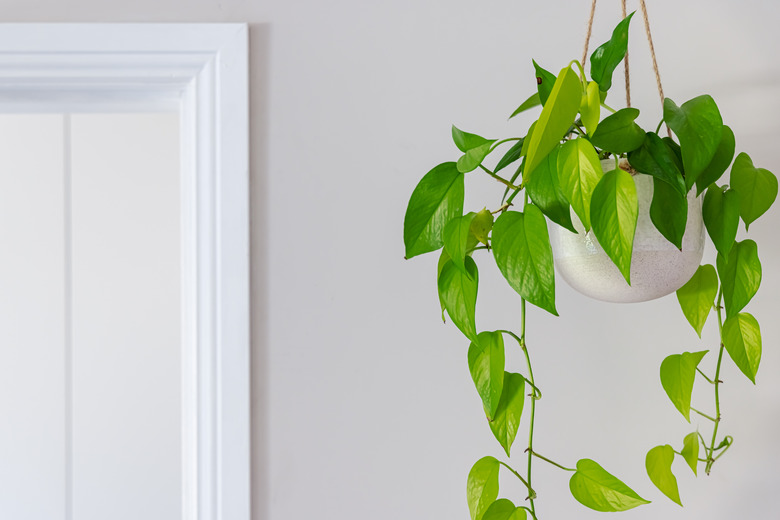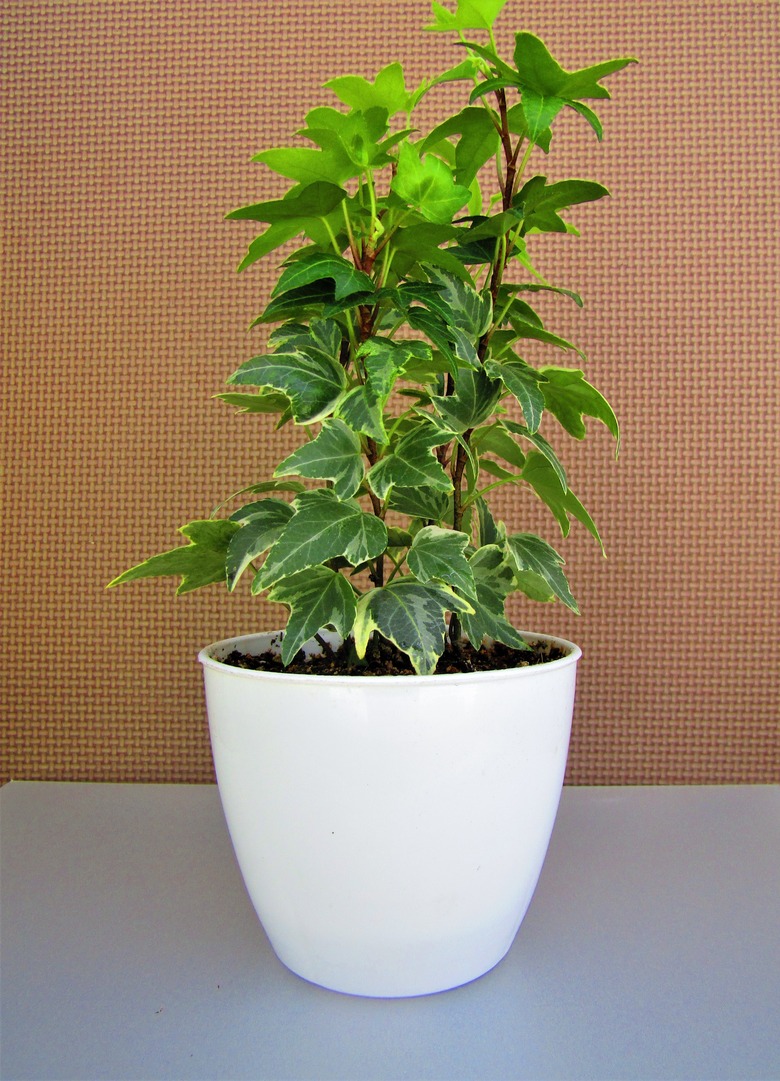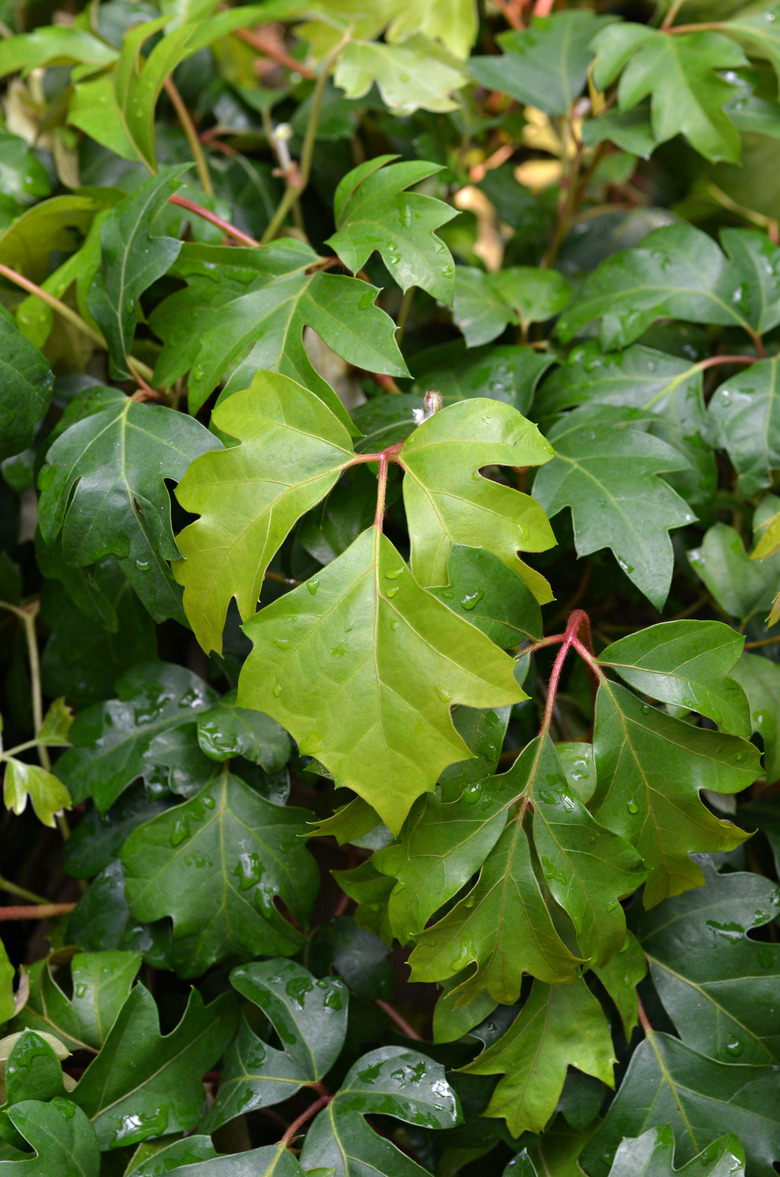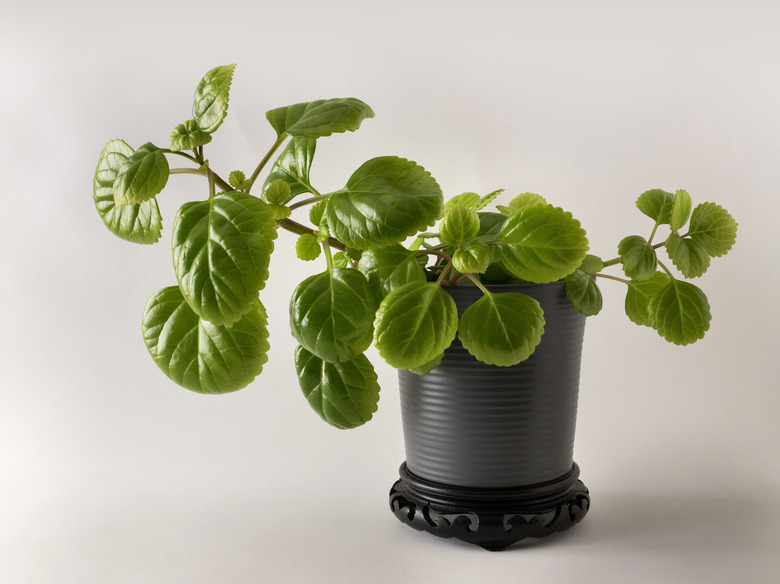A Guide To Caring For Indoor Ivy Plants
The term "ivy" often refers to woody, evergreen climbing vining plants. Ivies have highly ornamental foliage, and they can often be kept indoors as houseplants if provided with the right amount of light, moisture and fertilizer.
Types of Ivy Houseplants
Let's take a look at some of the main types of ivy.
English Ivy
English ivy (Hedera helix; zones 4 to 9) has become invasive in many parts of the U.S. and therefore should not be planted outdoors. This type of ivy, however, can be grown indoors in pots and hanging baskets or trained as a topiary.
English ivy has thick leaves, each with three to five lobes. There are hundreds of cultivars of English ivy to choose from, including some with variegated foliage.
Grape Ivy
Grape ivy (Cissus alata; zones 10 to 12), which is native to South and Central America and the West Indies, is one of several species in the genus Cissus that can be kept as houseplants.
The grape ivy has glossy, dark green trifoliate leaves, which means the leaves are made up of three leaflets. The leaflets are toothed.
Swedish Ivy
Swedish ivy (Plectranthus verticillatus; zones 10 to 11) is a fast-growing vine native to South Africa that is considered easy to care for because it can handle a variety of growing conditions.
This plant has glossy green leaves with scalloped edges. The leaves grow to lengths of about 1.5 inches. The flowers of the Swedish ivy, which bloom at different times of the year, are white or pale purple in color.
Caring for Ivy Plants Indoors
- **Light and Temperature:** Most houseplant ivy vines perform best when they receive indirect light. English ivy prefers bright light, while the grape ivy and the Swedish ivy do well in medium light. Direct sunlight can burn the leaves and, in Swedish ivy, can limit growth. Place ivy plants in rooms with minimum temperatures of 50°F.
- **Watering:** Ivy plants need consistent moisture when they are actively growing; however, you should allow soil to dry out to a depth of about 1 inch before watering. Root rot is a common problem with many indoor plants, including ivies. It is important not to overwater ivy plants and to plant them in containers that have good drainage. Too much moisture can also lead to leaf drop.
- **Fertilizer:** Indoor ivy plants often benefit from fertilizer. English ivy should be fertilized once a month during the growing season with a formula made for houseplants. Grape ivy should be fertilized four times during the growing season. If the leaves of a grape ivy plant are not dark green in color, the plant is not receiving enough fertilizer. Avoid feeding Swedish ivy plants too much nitrogen fertilizer, which can reduce blooming.
Tip
Indoor ivy plants that are under stress, meaning they are not receiving appropriate amounts of water and light, are more likely to become infested with pests.
Indoor Ivy Pest Management
Many common houseplants, including ivies, can become infested with pests. While it is possible to treat infestations if you catch them early, sometimes the plants need to be discarded. Infested plants should be isolated.
Spider Mites
Spider mites are tiny arachnids, usually imperceptible to the naked eye, that attack many species of plants. They survive by feeding on plant sap, resulting in chlorosis, or yellowing of the leaves. These pests can be controlled by cleaning the plant with soapy water made with dishwashing liquid.
Aphids and Scale
Like spider mites, soft-bodied insects known as aphids and scale suck sap from plants. Removing these insects manually with rubbing alcohol is one of the safest ways to control these pests without using harsh chemicals, which in some cases can harm the plant.
Mealybugs
If you see cotton-like clusters of insects on your indoor vines, they are likely a type of insect known as mealybugs. A strong stream of water can help dislodge these pests from stems and leaves. Insecticidal soaps also can be helpful.
References
- Clemson University Extension: Indoor Ivy
- North Carolina State Extension: Cissus Alata
- University of Florida IFAS Extension: Swedish Ivy
- Missouri Botanical Garden: Hedera helix
- Missouri Botanical Garden: Cissus alata
- Missouri Botanical Garden: Spider Mites – Indoors
- The American Ivy Society: What's That Crawling on My Ivy
- Missouri Botanical Garden: Plectranthus australis
- Missouri Botanical Garden: Mealybugs – indoors



